amazake
Amazake: The Rich History of Sweet Rice Wine!
James Lau
Posted on February 27, 2023
Share:
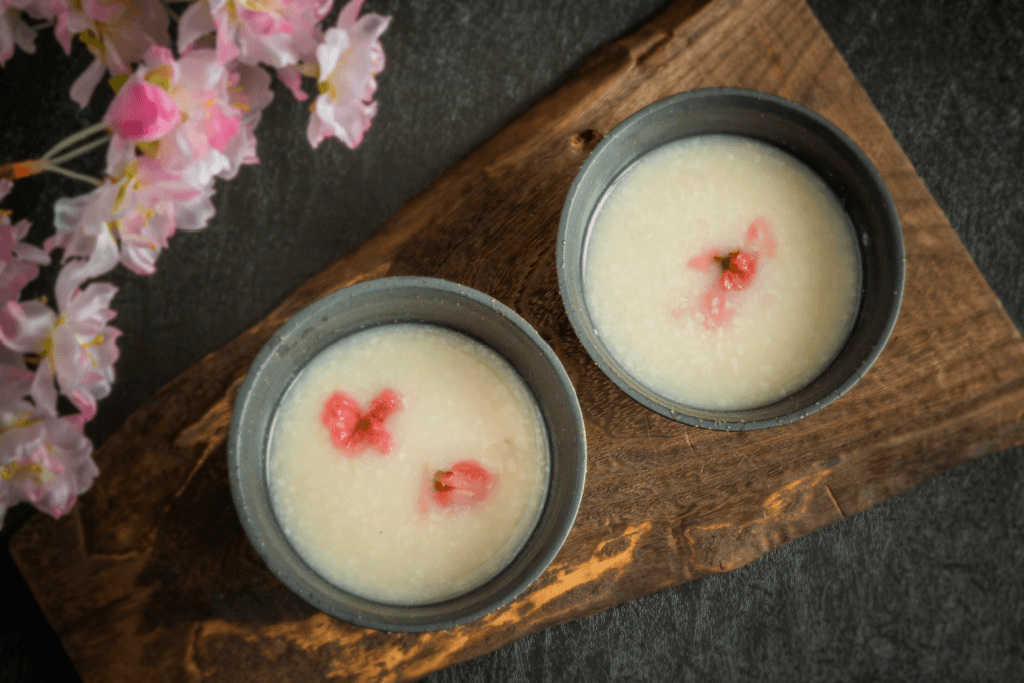
You might have seen an amazake at a Japanese shrine or temple or even served at a festival, but what is it? Let’s explore the origins of this tasty drink and talk about its role in Japanese cooking!
What is Amazake?
Amazake is a traditional Japanese sweet, low-alcohol drink made from fermented rice. It has been consumed in Japan for over a thousand years and is a warm winter beverage. The name means “sweet sake,” although it has a lower alcohol content than traditional sake.
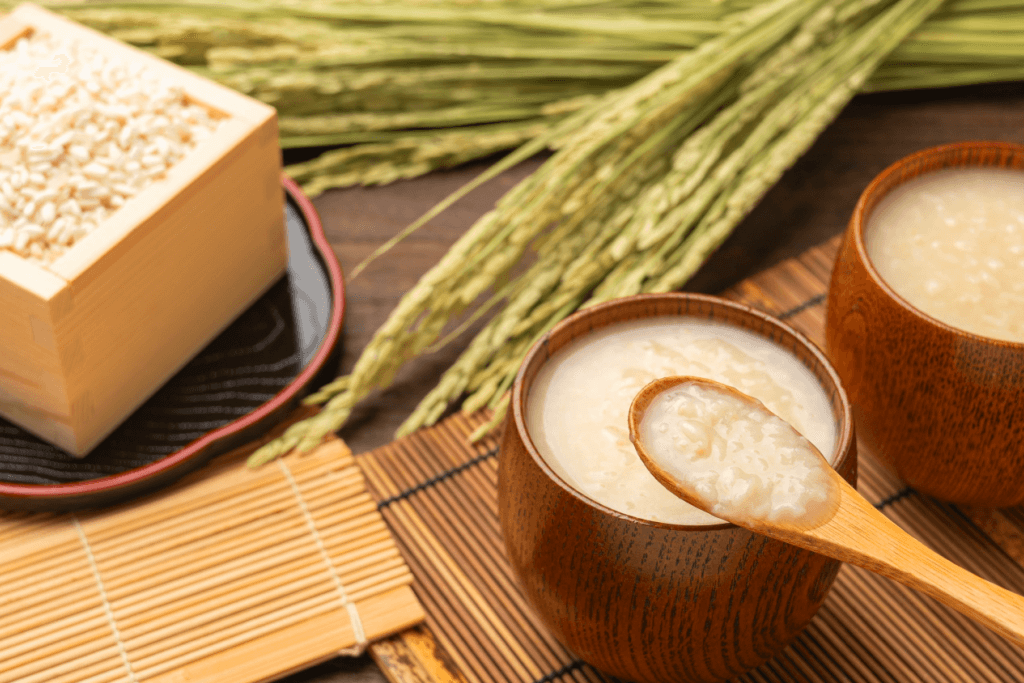
It’s also a dessert or snack known for its sweet, mild flavor and creamy texture. It is also a popular ingredient in Japanese cuisine and is a natural sweetener in desserts and other dishes. It is also believed to have health benefits, as it is high in vitamins and minerals and is said to help improve digestion and boost the immune system.
The History of Amazake
The history of amazake dates back over a thousand years to the Nara period in Japan (710-794 AD). According to legend, Gyoki, a famous Japanese monk, created this drink to cure sick people in his community. He mixed steamed rice, water, and a small amount of sake lees (the residue left after making sake) and let it ferment for a few days. The resulting liquid was sweet, creamy, and nutritious and soon became popular among the Japanese.

Amazake was also popular among Japanese warriors, who believed it gave them strength and energy during battles. They would mix it with miso soup and drink it before the war. During the Edo period (1603-1868), it became a standard drink among the commoners. Amazake is widely available and commonly consumed as a non-alcoholic beverage and sweetener in Japan.
Are you looking to enjoy more traditional delicacies like amazake? Check out Sakuraco! Sakuraco delivers traditional Japanese snacks, teas, sweets, and snacks from local Japanese makers directly to your door so you can enjoy the latest treats instantly from Japan!
How do you make it?
The recipe for amazake involves cooked rice and koji mixed with koji. Koji is a type of fungus also present in sake and miso production. The mixture is then left to ferment for several hours, when the koji enzymes break down the rice’s starches into simpler sugars, resulting in a sweet, creamy beverage.
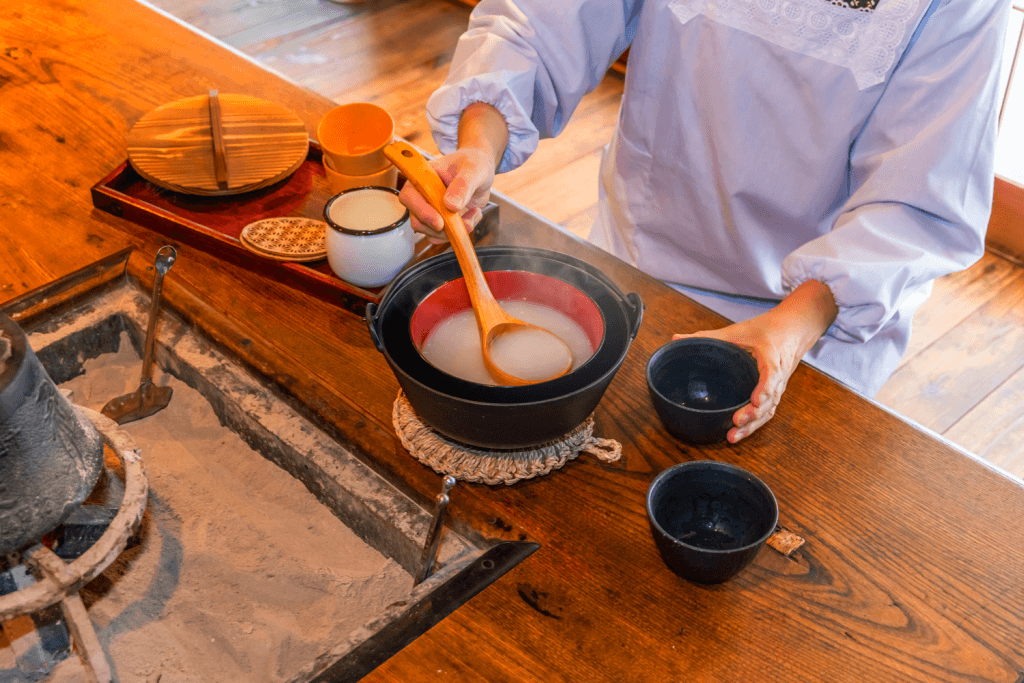
Amazake uses different types of rice, but glutinous rice is the most viable. Glutinous rice because it produces a thicker and creamier beverage. The koji is also a key ingredient, as it is responsible for fermentation. Koji is made by steaming rice and then inoculating it with a particular mold. The koji is then mixed with the cooked rice to start the fermentation process.

The fermentation of amazake can take six to 12 hours, depending on the desired sweetness and thickness. During this time, people must maintain a constant temperature of around 60-65°C to encourage fermentation. Once the fermentation is complete, people strain it to remove any solid particles.
How do you consume it?
People drink it hot or cold, depending on personal preference. It pairs exceptionally well with a winter sprinkle of cinnamon or ginger. It is an excellent beverage and a natural sweetener for many treats, such as cakes, smoothies, and ice cream. Moreover, it is a common sweetener in desserts, such as mochi or sweet rice cakes, and even in a sweet porridge called okayu.
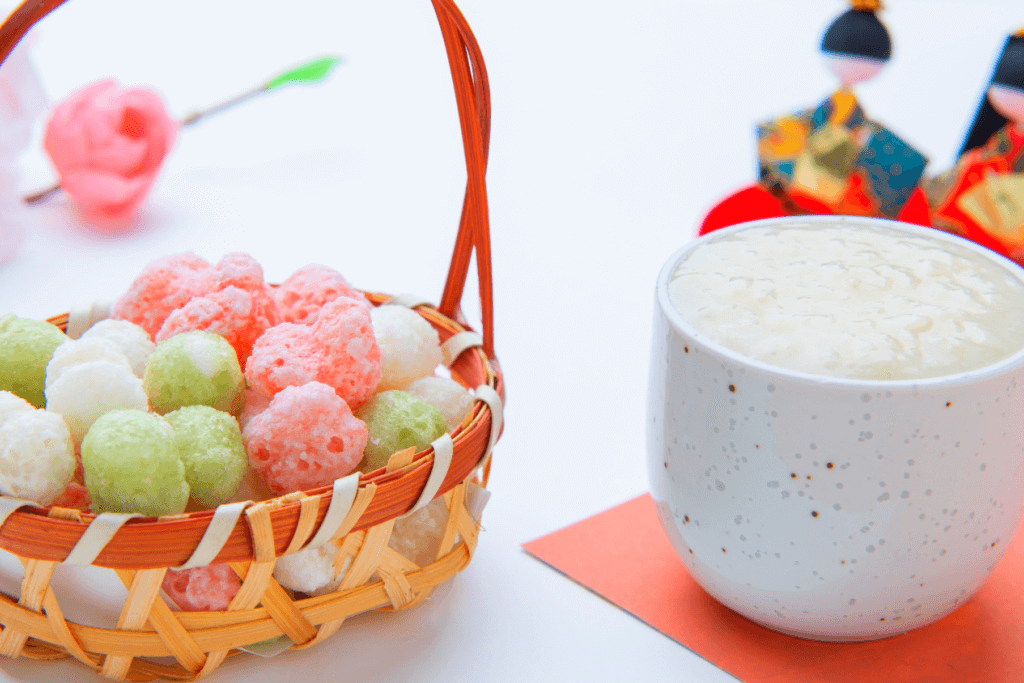
Regarding health benefits, amazake is good for digestion due to the enzymes produced during fermentation. It is also high in vitamin B and other nutrients, making it a healthy alternative to other sweet beverages. This versatile and tasty drink is integral to Japanese culture and cuisine.
Are there any famous amazake brands in Japan?
There are a few famous types of amazake that are famous throughout Japan. One of the most well-known is “hibakamado amazake,” made in Hiroshima prefecture. This type uses a special koji unique to the region, and people enjoy it during the New Year’s holiday.
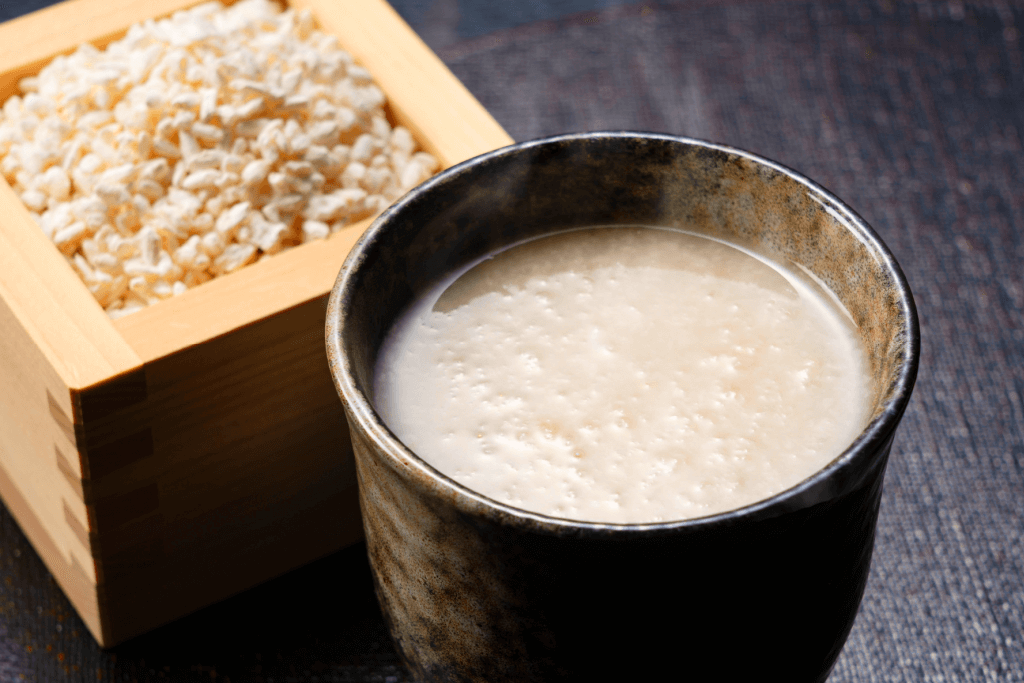
Another famous amazake is “Kanbai,” made in Ishikawa prefecture. Kanbai’s version has a smooth, creamy texture; people drink it warm in winter. It is also an ingredient in a local dish, “Kaga no dango,” a sweet rice flour dumpling.
In addition to these regional varieties, several popular brands are available throughout Japan. One of the most well-known is “Marusan,” producing it for over 100 years. Marusan’s amazake is famous for its rich, sweet flavor and is a healthy alternative to other sweet beverages. Have you ever tried amazake before?

Discover authentic flavors with Sakuraco
Get Sakuraco 

Discover authentic flavors with Sakuraco
Get Sakuraco 
Related Articles

Japanese Fish Bait: The Beautiful Art of Kebari
Kebari are traditional hand-tied flies used for freshwater fishing in Japan, especially in mountain streams where small insects form the main diet of native fish. Instead of bright plastic lures, kebari use feathers, thread, and natural materials to create subtle movements in the water.

Japan Holidays Guide: Relax, Explore, and Delight in Festive Fun
As the year draws to a close, everywhere buzzes with preparations for the holidays, and Japan is no exception. Despite the cold winter weather, you can feel warmth in the scenery, decorations, and festive activities across the country. Let’s explore the unique experiences of holidays in Japan that many people dream of enjoying at least once in their lifetime!

Tokyo Gardens: Five Beautiful Traditional Japanese Gardens to Visit
Tokyo gardens offer a relaxing escape for visitors looking to get a breath of fresh air. However, Tokyo has more than just the typical gardens we see in the West. Let’s explore five traditional Japanese gardens and what makes them unique!

Japan Cruise Spotlight: The Ultimate Guide to Abashiri Icebreaker!
Japan offers a diverse range of cruise experiences, taking in various stunning landscapes. But, in the chilly grip of winter, some voyages pull in adventurers from around the globe. At the forefront of these wintry trips is the Abashiri Icebreaker Cruise in Hokkaido.



